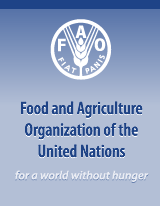E-mail:
Country:
New Zealand
Organization/agency name (Full name):
Ministry for Primary Industries
Contact person name:
john vandenbeuken
Website:
Physical full address:
Pastoral House, 25 The Terrace, Wellington, 6012
Phone number:
0298942581
Fax number:
Country introduction
Summary:
New Zealand and Australia share a joint food regulation system for the composition of labelling of most foods. Food Standards Australia New Zealand (FSANZ) is the regulatory agency responsible for the development of the joint food standards in Australia and New Zealand. The main office (approximately 120 staff) is located in Canberra (in the Australian Capital Territory) and the smaller New Zealand office (approximately 15 staff) is located in Wellington on the North Island.
Framework
Regulatory framework:
My country has a regulatory framework that requires the competent authority to conduct safety assessment of GM food.
Structure for GM food safety assessment:
My country has competent authority, agency, organization, ministry, department, committee, commission or a system/mechanism that is tasked to conduct or review GM food safety assessment.
Supplemental information:
The Food Standards Australia New Zealand Act 1991 establishes the mechanisms for the development and variation of joint food regulatory measures and creates FSANZ as the agency responsible for the development and maintenance of a joint Australia New Zealand Food Standards Code (the Food Code). The Ministry for Primary Industries(MPI) is the New Zealand government agency responsible for implementation of the Food Code, including compliance policy.
In New Zealand the Food Code is given legal effect through incorporation by reference into the New Zealand (Australia New Zealand Food Standards Code) Food Standards 2002. This is an instrument that is made by the Minister for Food Safety under section 11 C of the Food Act 1981. Within the Food Code, Standard 1.5.2 deals with Foods produced using Gene Technology. Applicants seeking to have a GM food approved, request a variation to Std 1.5.2 to have the GM food (from a particular line) included in the Schedule to Std 1.5.2. Only those GM foods listed in the Schedule can legally enter the food supply. An Application Handbook provides information that is required to make an application to vary the Food Code. This Handbook is a legal document and therefore the specified mandatory information must be supplied.
For GM foods, there is also a Guidance Document that, as the name suggests, provides applicants with further details and background information on the data needed for the safety assessment of GM foods. The assessment process must be completed within a statutory timeframe (9 - 12 months depending on the complexity of the application) and involves at least one public consultation period. MPI responds to issues raised in the assessment reports by writing submissions to each application and proposal, Submissions on applications for GM foods are based around a review of the FSANZ safety assessment , All MPI submissions to FSANZ are available on a public website . Following the last public consultation, an Approval Report is prepared and is considered by the FSANZ Board who make a decision about whether the requested variation to the Food Code should be approved or not. The Board's decision is then passed on to the Legislative and Governance Forum on Food Regulation (the Forum), a committee comprising government Ministers from Australia and NZ who have resposibility for food regulation. This Committee has approximately 2 months to review the Board's decision. If the Board's approval is accepted by the Forum, the approval is then gazetted and becomes law.
Before any of the amendments to the Food Code can be adopted in New Zealand, the New Zealand Minister is required to take certain matters into account under the Food Act. These preconditions are set out in Section 11 E(1) of the Food Act 1981 and include the need to protect public health, the desirability of avoiding unnecessary restrictions on Trade and the desirability of maintaining consistency between New Zealand's food standards and those applying internationally.
Contact details of the competent authority(s) responsible for the safety assessment and the product applicant:
Assessment
GM food safety assessment guidelines:
My country follows the relevant Codex Guidelines or national/regional guidelines that are in line with the Codex Guidelines in conducting safety assessment of GM food.
Conduct of GM food safety assessment:
My country regularly conducts food safety assessment of GM food.
Supplemental information on the implementation:
Stacked events
Regulation of stacked events:
In my country, GM food/feed that contains stacked event(s) is not considered as a new product.
Supplemental information on the stacked events:
FSANZ does not: Separately assess food from stacked event lines where food from the GM parents has already been approved; Mandate notification of stacked events by developers; Notify the public of stacked event ‘approvals’; List food derived from stacked event lines in the Code, unless the stacked event line has been separately assessed as a single line e.g. Application A518: MXB-13 cotton (DAS-21023-5 x DAS-24236-5)
Production and trade
GM food/feed production:
My country produces GM food or feed only for research purposes.
GM food/feed imports:
My country allows imports GM food or feed upon authorization.
Supplemental information on the production and trade:
LLP/AP incidents
LLP/AP incidents:
My country has faced LLP/AP situations in the last 10 years.
Supplemental information on the LLP/AP incidents:
The last incident of LLP was in 2006
Labelling requirement
Labelling requirement:
My country has a mandatory and positive labeling regulation & allows a voluntary and negative labeling on GM food.
Supplemental information on the Labelling requirement:
Relevant links to documents and information prepared by the competent authority responsible for the safety assessment
Other relevant documents:
Country information last modified:
01/04/2024
